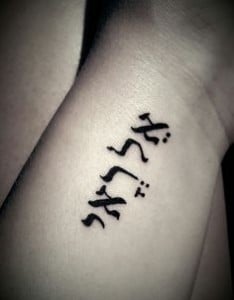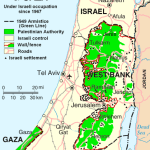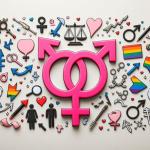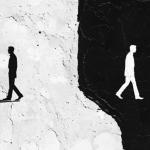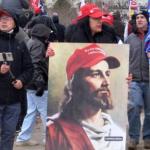My post-doc, Justin K.H. Tse, is guest posting for me this week, sharing his fascinating thoughts on Asian American religion which will be featured on these next several posts.
I’d like to thank Jim Wellman for letting me guest post on his American Religion blog during this Asian Pacific American Heritage Month. Inaugurated in 1977 by Representatives Frank Horton (R-NY) and Norman Mineta (D-CA) and Senators Dan Inouye (D-HI) and Spark Matsunaga (D-HI) as Asian/Pacific Heritage Week, President George H.W. Bush made the entire month a time to remember the contributions of Asian Pacific Islanders (APIs) to American life in May 1990.
It’s a good time to talk about how Asian Americans have contributed to American religion.
What do we really mean when we say that Asian Americans have contributed to American religious life? Often, people seem to mean that Asian Americans are making what Diana Eck calls a “new religious America.” Asian Americans, we are told, are changing the face of American religion from its historic white Anglo-Saxon Protestant dominance to a multicultural, pluralistic landscape of mosques, gurdwaras, and temples.
I don’t want to discount the reality that Asian Americans are reshaping American religion. But it seems to me that when we talk about Asian American religions, the conversation feels very crowded. There are assumptions about who Asian Americans are, what Asian “culture” is, and what we have contributed to America. Asian Americans usually don’t have the first word in this discourse, and by the time everyone’s done talking, we usually don’t have the last word either. It reminds me a bit of the times when I’d be crossing the border from Canada to America or getting coffee at my local shop or grocery shopping: people make small talk and ask what I do. Jim had given me his American Religion course for the University of Washington’s (UW) winter quarter, so I told people that I was teaching American Religion. I became accustomed to blank stares and second takes. If Asian Americans can’t get a word in about Asian American religions, maybe it’s symptomatic of the larger problem that Asian Americans usually don’t get a word in about American religion, period.
In the spirit of trying to get a word in, Jim has asked me to talk about how several perceptions of Asian American religions might need to be altered. Perhaps this will thin out the conversation a little bit so that Asian Americans can actually get a word in.
In this series of posts, I’ll talk about common misperceptions that I think need to be displaced. I’ll start with why we are not all Bruce Lee.
Korean American evangelical megachurch pastor Dave Gibbons has a story about why he likes Bruce Lee’s quote, “Be water, my friend.” When he was growing up, the kids in his neighborhood would call him Bruce Lee. “It had nothing to do with my martial arts skills, I can assure you,” he writes. “It was because I was Asian-American. People at that time assumed that all Asians had black belts and had been trained by senseis since the age of two. How hilarious! If you knew me, you’d know in a second that fighting’s not my thing. I’m one of those lover-not-a-fighter types.” When Gibbons grew up to plant Newsong Church in Irvine, California, he says that he began to think about Bruce Lee’s legacy and what it meant for him, especially because Lee “wasn’t just a fighter either.” Lee was a philosopher, and water was his guiding force: “You put water into a cup, it becomes the cup. You put water into the bottle, it becomes the bottle. You put it into a teapot and it becomes a teapot. The water can flow. The water can crash. Be water, my friend” (The Monkey and the Fish: Liquid Leadership for a Third Culture Church, p. 92-93).
Currently, Gibbons’s entire ministry paradigm is focused on Bruce Lee’s water theory. This is very important: Gibbons is the poster child for Asian American evangelical ministry because of his contributions to Doreen Carjaval’s 1994 Los Angeles Times’s front-page news story and Helen Lee’s 1996 Christianity Today groundbreaking piece on the second-generation “silent exodus” from first-generation immigrant churches.
Gibbons illustrates what’s both good and bad about the Bruce Lee stereotype. Whenever I say that I’m talking about “Asian American religions,” people say, “Well, that’s so broad! There are Chinese, Korean, Japanese, Vietnamese, Filipina/o, Indian, Cambodian, Hmong, and they’re not all the same!” True as that may be, Gibbons’s experience as a Korean American being called Bruce Lee (who was Chinese) and being assumed to have studied with senseis (who are Japanese) suggests that there is a common experience of all “Asians” being lumped together in America. That he then takes on the Bruce Lee thing as a ministry paradigm indicates that the “Asian” thing is in fact a point of reflection for Asian Americans.
Bruce Lee does have a lot to say about Asian Americans. He was one, and Asian Americans can look to him as a hero. In fact, the Wing Luke Museum of the Asian American Experience here in Seattle’s International District will feature a Bruce Lee exhibit that will unfold his Asian American legacy to the public all autumn long. But in another way, Bruce Lee is an image that is also foisted onto many Asian Americans, crowding out what they might have to say about the way that they practice religion.
In order to thin out the noise, I’m writing this post to say that we are not all Bruce Lee.
I write this as someone who could have taught American Religion to Bruce Lee if I had been teaching in the 1960s. Granted, the lawsuit that founded the Comparative Religion Unit at the UW hadn’t even been filed yet. But small anachronism aside, I have a feeling that Lee would have been interested in my course because he was a philosophy major at the UW. Some of his class notes have been collected in Bruce Lee: Artist of Life (ed. John Little, 1999). The sense that one gets is that Lee learned a particular kind of “Western” reading of Plato, Aquinas, Descartes, and Kant, one that broke down philosophy into analytical bits. Lee saw himself as something of a Chinese ambassador to this American emphasis on the parts over the whole. In a paper for a UW class, Lee explained that it was precisely this divide-and-conquer approach that martial arts weaned him off of:
On the sea I thought of all my past training and got mad at myself and punched the water! Right then—at that moment—a thought struck me; was not this water the very essence of gung fu? Hadn’t this water just now illustrated to me the principle of gung fu? I struck it but it did not suffer hurt. Again I struck it with all of my might—yet it was not wounded! I then tried to grasp a handful of it but this proved impossible. This water, the softest substance in the world, which could be contained in the smallest jar, only seemed weak. In reality, it could penetrate the hardest substance in the world. That was it! I wanted to be like the nature of water. (Lee, Artist of Life, p. 17).
Lee’s reflections contrast a “Western” building-block approach to life with the “Chinese” way of wholeness and harmony in water, something summarized by the Tao, the “way” of natural balance and flow. He wanted to provide a distinctive Asian American contribution to American religion.
The trouble is that Lee’s voice got crowded out, especially by the black-white binary obsessions of American racial politics. Despite being the main star of the detective series The Green Hornet and advising Sharon Tate on martial arts in Dean Martin’s The Wrecking Crew, Warner Bros passed him over for David Carradine for their series Kung Fu:
I was supposed to do it—but the network decided against it. They think that business-wise it’s a risk. And I don’t blame them. It’s the same way in Hong Kong: if a foreigner came and became a star, if I were the man with the money, I probably would have my own worry of whether or not the acceptance would be there. I’m glad they decide against it, you know? (Bruce Lee, The Celebrated Life of the Golden Dragon, ed. John Little, p. 28-9).
With his career stalling in America, Bruce Lee went back to Hong Kong and became the actor for which he is now known, generating movies with Golden Harvest Films like The Big Boss (1971), Fists of Fury (1972), The Way of the Dragon (1972), Enter the Dragon (1973), and the unfinished Game of Death (1973), during which he met his untimely end under mysterious circumstances. You could say that these films were the application of Bruce Lee’s thinking on philosophy and religion: they’re about honoring the ancestors, following the Tao of water, and showing that there’s a viable Chinese alternative to Western piecemeal thinking. By this time, though, yet another side of the American race divide had embraced him, again crowding out his message. As Amy Abugo Ongiri notes, Bruce Lee became a Blaxploitation film hero, a symbol of how if the little Asian guy could take on the big racist powers, so could African Americans. In the immortal words of Carl Douglas, everybody was kung fu fighting…
The image that you might get from all of this is that Asian American religion basically boils down to martial arts and all the sagely, non-Western wisdom that comes with it.
That’s precisely what I want to displace.









